Addressable Panels
- Intelligent panels which identify the exact device in fire or fault.
- Systems wired in loops, often saving cable and maximising integrity.
- Panels avaible from leading manufacturers including Advanced, Kentec, Zeta, Morley-IAS and more.
Know what you're looking for?
Filter Products
Manufacturer
Advanced(5)
C-Tec(1)
Eaton(4)
Fike(2)
Kentec(2)
Morley-IAS(7)
Nittan(1)
Zeta Alarms(4)
Type
Resolution
A Rating
Alarm In/Out
Anti-Fog
Audio In/Out
Auto Aligning
B Rating
Battery
Bluetooth Controller
Built-in Mic
Built-in Speaker
C Rating
Channels
Class A Holes
Class B Holes
Class C Holes
CO Testing
Codec
Colour
Detection Type
Device Type
Direction
Environment
IR Range
Extinguisher Type
F Rating
Face Detection
Fast Fix Base
First Aid
Hazardous Applications
Head Removal
Heat Testing
Interconnectable
Lens
Lines
Low Level Controller
Marine Applications
Material
Max HDD Capacity
Max Loops
1(13)
2(12)
4(6)
5(1)
8(2)
Maximum Record Resolution
Minimum Distance
Monitor Outputs
Networkable
Optical Zoom
Photoluminescent
Pipework Diameter
PoE Ports
Power
Protocol
Zeta Standard(1)
Apollo(12)
Argus Vega(6)
Eaton(2)
Fike(2)
Hochiki(11)
Morley-IAS(1)
Nittan(5)
Protocol 800(2)
System Sensor(7)
Zeta MKII(4)
Range
Reach
Relay
Remote Control Test
Self-Test
Series
Short Circuit Isolator
Sign Type
Size
Smoke Testing
Stimulus Type
System Type
Addressable(26)
Technology
Touchscreen
No(17)
Yes(9)
Wireless Interlink
Showing all 26 results
-
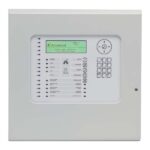
Advanced Go & Go+ Single Loop Fire Alarm Control Panel
Advanced- Easy to install and use.
- Feature-rich and flexible.
- Fast and efficient.
- Ready now and for the future.
-
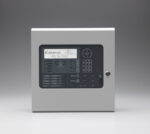
Advanced MxPro 5 – 1 Loop Panel
Advanced- Single Loop Control Panel
- Programmable Push Buttons
- Rack-mount options
- Multiple Languages
- Global Compliance
- Fully Networkable
- Dual microprocessor
- Real-time clock
- 3 Year Warranty
- Slide-in labels
- Fully programmable
- Installer's logo application
-

Advanced MxPro 5 – 2 Loop Panel
Advanced- 1 - 2 Loop Panel
- Multiple Languages
- Global Compliance
- 3 Year Warranty
- Programmable Push Buttons
- Fully expandable
- Fully Networkable
- 20 Zonal / 25 System LED’s
- Slide-in labels
- Rack-mount options
-
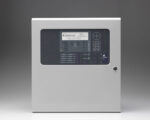
Advanced MxPro 5 – 4 Loop Panel
Advanced- Dedicated 1 - 4 Loop
- Fully expandable
- Global Compliance 3 Year Warranty
- Programmable Push Buttons
- Multiple Languages
- Fully Networkable
- 20 Zonal / 25 System LEDs
- Slide-in Labels
- Rack-mount options
- Robust equipment chassis
- Fully programmable
-

Advanced MxPro 5 – 8 Loop Panel
Advanced- Dedicated 2 - 8 Loop.
- Global Compliance.
- 3 Year Warranty.
- Programmable Push Buttons.
- Multiple Languages.
- Fully Networkable.
- 20 Zonal / 25 System LEDs.
- Slide-in Labels.
-
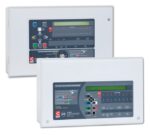
C-Tec XFP Addressable Fire Alarm Panel
C-Tec- 1 or 2 loop addressable fire alarm panel
- Apollo XP95 or Hochiki ESP protocols supported
- Economy 16 zone plastic or robust 32 zone metal versions
- Networkable upto 8 XFP panels of any variant
- Certified to latest EN54 standards by LPCB
-
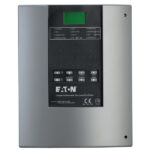
Eaton CF2000 Entry Level Addressable Fire Alarm Panel
Eaton- Simple - Easy to use, single, non-networked panel.
- User-freindly - Comprehensive, menu-driven, LCD display.
- Inclusive - Multi-language selection capability.
-

Eaton CF3000 High Specification Addressable Fire Alarm Panel
Eaton- Adaptable - Available in 1, 2 and 4 loop.
- System Localisation - Multi-language selection.
- Scalable - Up to 126 panels.
-

Eaton xDetect 2 Loop Enclosure Addressable CIE Panel with 128 Zonal LEDs
Eaton- Modular system architecture for easy expansion and adaptation
- Intuitive color-coded touchscreen interface for user-friendly operation
- EN54 certified and LPCB approved for reliability and compliance
-
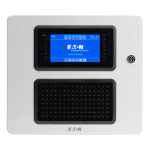
Eaton xDetect 4 Loop Enclosure Addressable CIE Panel with 128 Zonal LEDs
Eaton- Modular system architecture with configurable backplane and optional color-coded cards & modules.
- Networkable up to 250 panels for comprehensive coverage.
- Intuitive color-coded touchscreen interface for user-friendly operation
-
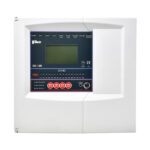
Fike CIE-A-200 Single Loop Addressable Fire Alarm Panel
Fike- 1 loop Fike addressable panel.
- Approved to EN54 Part 2 & 4.
- 32 supported zones.
- LCD display.
- 31 character device labels.
- Maximum 8 repeater panels.
- 2000m max loop length.
-
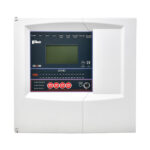
Fike CIE-A-400 2 Loop Addressable Fire Alarm Panel
Fike- 2 loop Fike addressable panel.
- Supports up to 400 devices.
- 32 supported zones.
- LCD display.
-
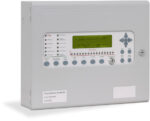
Kentec Syncro AS 1 or 2 Loop Analogue Addressable Panel With 16 Zonal LEDs
Kentec- 16 Zonal LED Indicators
- Available in 1 or 2 Loops
- Apollo, Argus Vega and Hochiki ESP Protocols
- Flush and Surface Options
- Key Enable Options
-

Kentec Syncro AS Lite 1 Loop Addressable Panel
Kentec- 16 Zonal LED Indicators
- Large Graphic Display
- Supports Apollo, Argus Vega, and Hochiki Protocols
- Compact and Stylish Enclosure
-
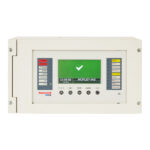
Morley MAx 1 Loop Addressable Panel
Morley-IAS- Single loop panel.
- 7” touch screen display.
- 750mA loop capacity.
- Networkable up to 64 panels or 128 loops.
-
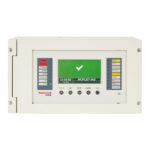
Morley MAx 2 Loop Addressable Panel
Morley-IAS- 2 loop panel.
- 7” touch screen display.
- 750mA loop capacity.
- Networkable up to 64 panels or 128 loops.
-

Morley MAx 4 Loop Addressable Panel
Morley-IAS- 4 loop panel.
- Expandable to 8 loops.
- 7” touch screen display.
- 750mA loop capacity.
- Networkable up to 64 panels or 128 loops.
-

Morley ZXSe Analogue Addressable Panel
Morley-IAS- Multi-protocol.
- Modular concept.
- Simple, robust design to EN54 Parts 2 & 4.
- Intuitive to use.
-

Morley-IAS DX Connexion 1 Loop Addressable Panel
Morley-IAS- Single loop addressable panel from Morley-IAS.
- Multi-protocol support (XP95, ESP or System Sensor).
- All programming can be done via panel and/or software.
- Networkable with other DX Connexion panels.
-
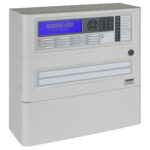
Morley-IAS DX Connexion 2 Loop Addressable Panel
Morley-IAS- 2 loop addressable panel from Morley-IAS.
- Multi-protocol support (XP95, ESP or System Sensor).
- All programming can be done via panel and/or software.
- Networkable with other DX Connexion panels.
-

Morley-IAS DX Connexion 4 Loop Addressable Panel
Morley-IAS- 4 loop addressable panel from Morley-IAS.
- Multi-protocol support (XP95, ESP or System Sensor).
- All programming can be done via panel and/or software.
- Networkable with other DX Connexion panels.
-

Nittan Evolution 1 Single Loop Fire Alarm Control Panel
Nittan- 4.3 inch touch screen.
- Easy to use configuration software.
- Full cause and effect programming at Panel or PC Configuration tool.
- Up to 254 devices on the loop.
- 254 zones available.
- Network Card built in for networking up to 16 panels.
-
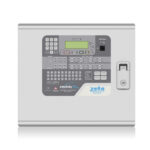
Simplicity Plus 1 or 2 Loop Addressable Panel
Zeta Alarms- 1 or 2 loop addressable panel.
- Configured via the panel (no need for special tools or laptop).
-

SmartConnect Multi-Loop, 10 Module Addressable Panel
Zeta Alarms- Modular construction allows a panel to be specified using just the required modules.
- Up to 6 loop card modules.
- 4.3” colour touch screen display.
- Capacity for up to 10 intelligent modules
- Full system redundancy
- Connection to TCP/IP Module.
- Extensive Day/Night mode programming.
- Full cause and effect programming via front panel or the Smart configurator PC software.
- 8032 event log entries.
- using multiple zone monitor modules, the panel can be configured into a fully functioning conventional panel.
- 250 Fyreye MKII devices per loop
- 254 Addressable programmable zones
- Up to 64 panel peer-to-peer network.
- Positive Alarm Sequence.
- Alarm Verification
- Day/night (Building occupied/unoccupied) programming.
- Alarm circuit special application 24V mode.
- 400W Power Supply.
-
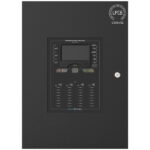
SmartConnect Multi-Loop, 6 Module Addressable Panel
Zeta Alarms- Modular construction allows a panel to be specified using just the required modules.
- Up to 4 loop card modules.
- 4.3” colour touch screen display.
- Capacity for up to 6 intelligent modules
- Full system redundancy
- Connection to TCP/IP Module.
- Extensive Day/Night mode programming.
- Full cause and effect programming via front panel or the Smart configurator PC software.
- 8032 event log entries.
- using multiple zone monitor modules, the panel can be configured into a fully functioning conventional panel.
- 250 Fyreye MKII devices per loop
- 254 Addressable programmable zones
- Up to 64 panel peer-to-peer network.
- Positive Alarm Sequence.
- Alarm Verification
- Day/night (Building occupied/unoccupied) programming.
- Alarm circuit special application 24V mode.
- 400W Power Supply.
-
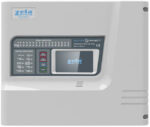
SmartConnect Touchscreen 1 Loop Addressable Fire Alarm Panel
Zeta Alarms- 4.3 inch colour touch screen display
- Remote monitoring via a desktop PC or smartphone via the cloud
- Easy to use configuration software
- Full cause & effect programming via front panel or PC
- 250 Zeta MKII protocol devices per loop
- 250 available zones, 16 with LED indication






